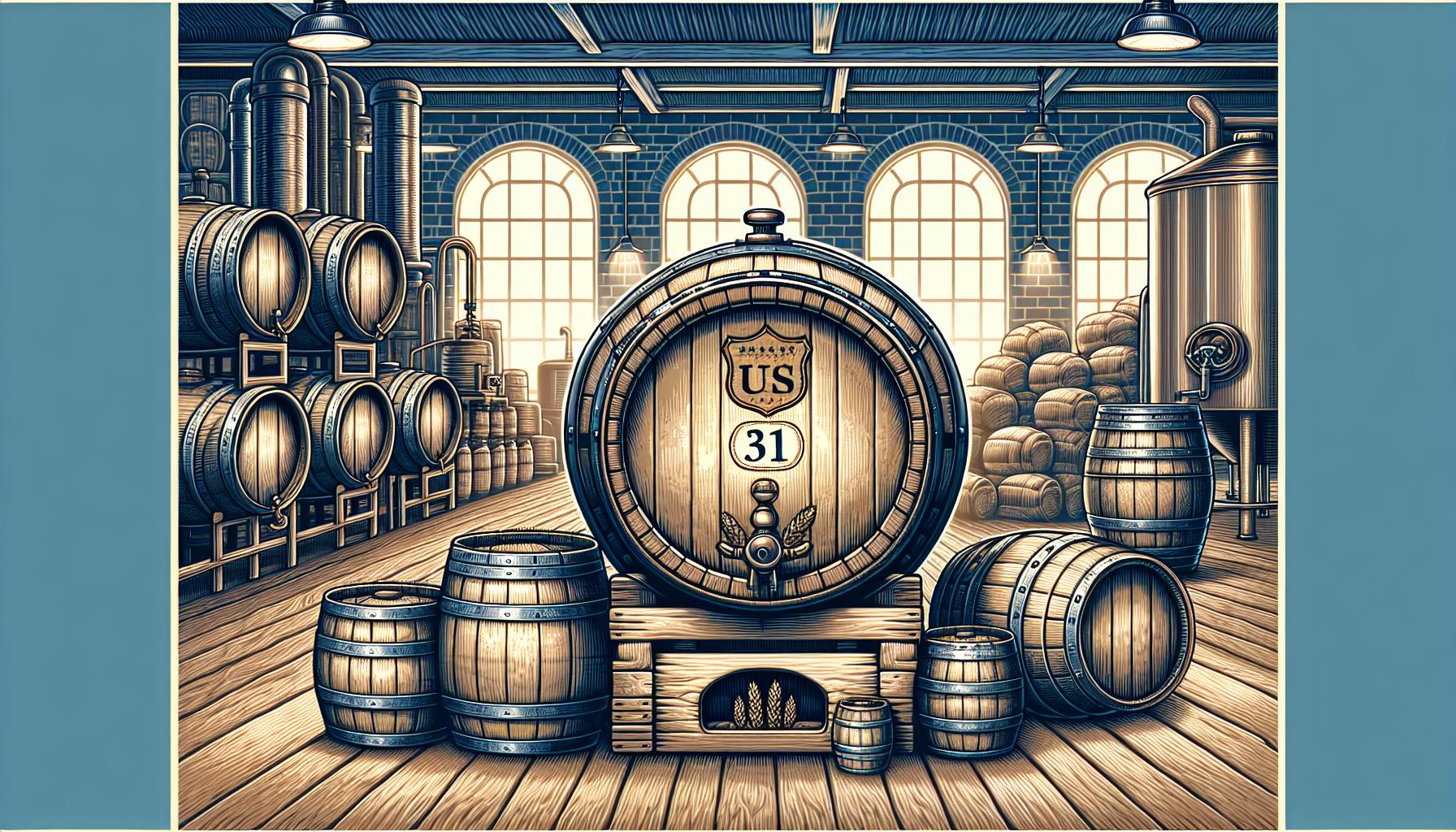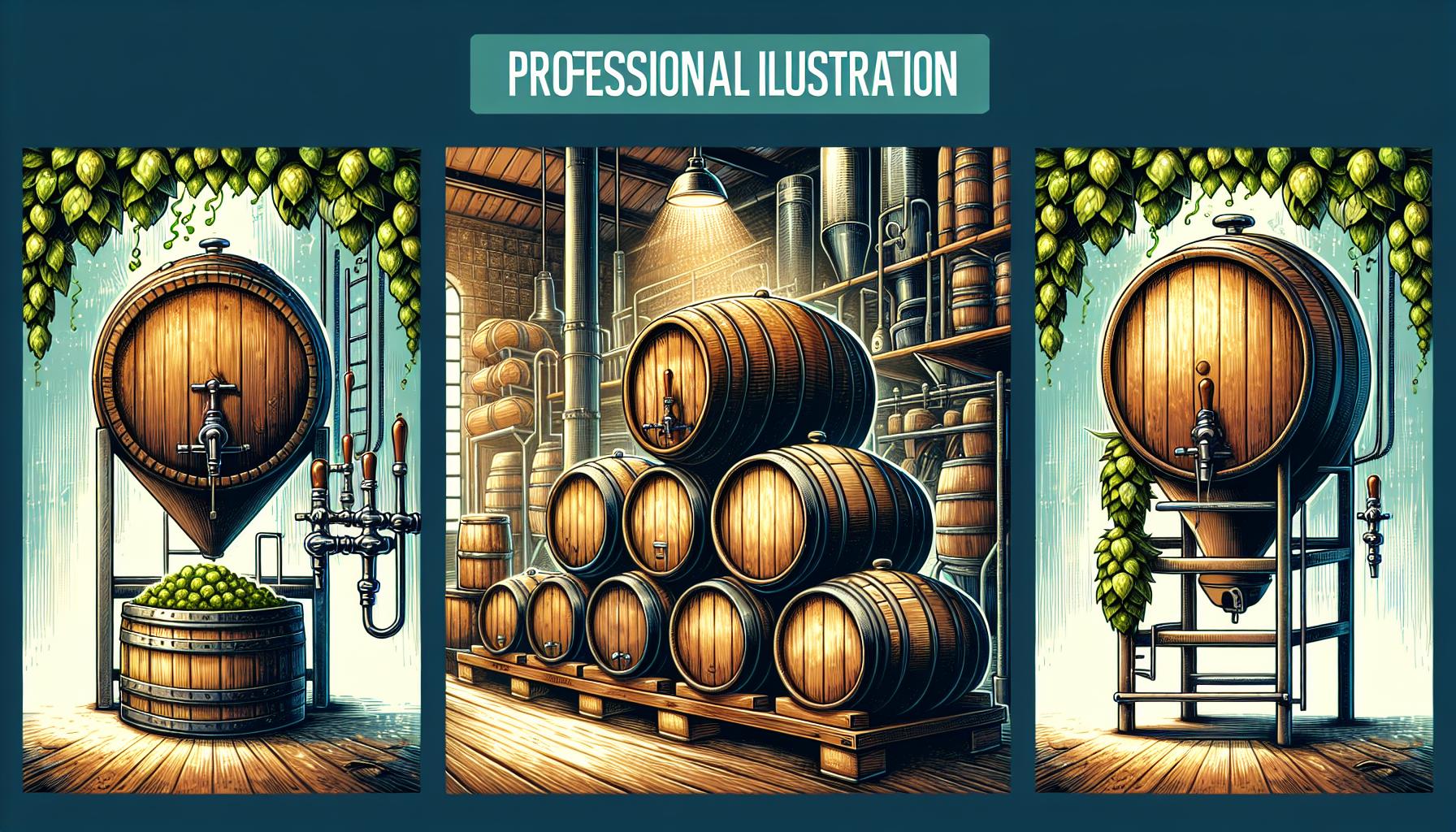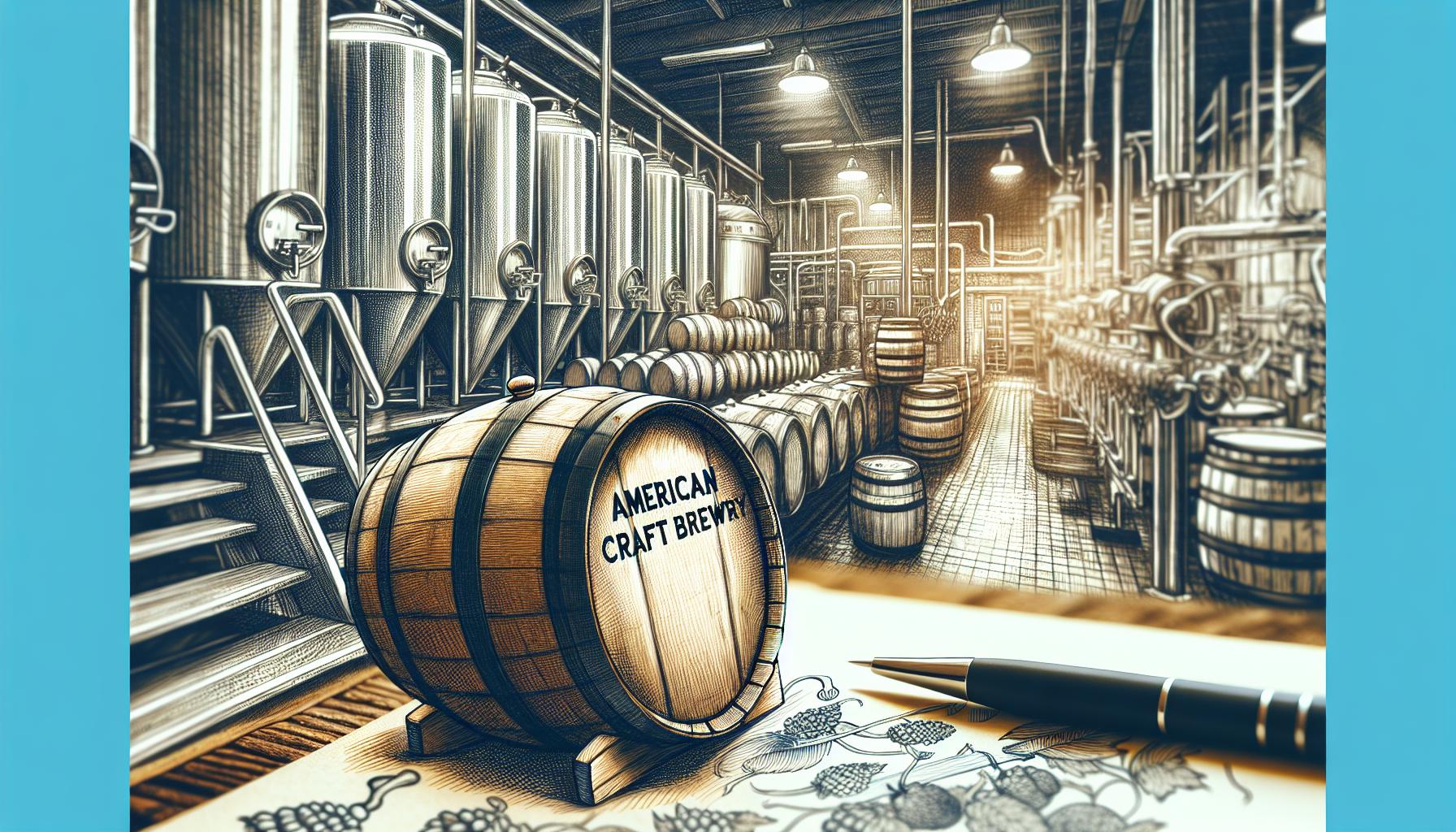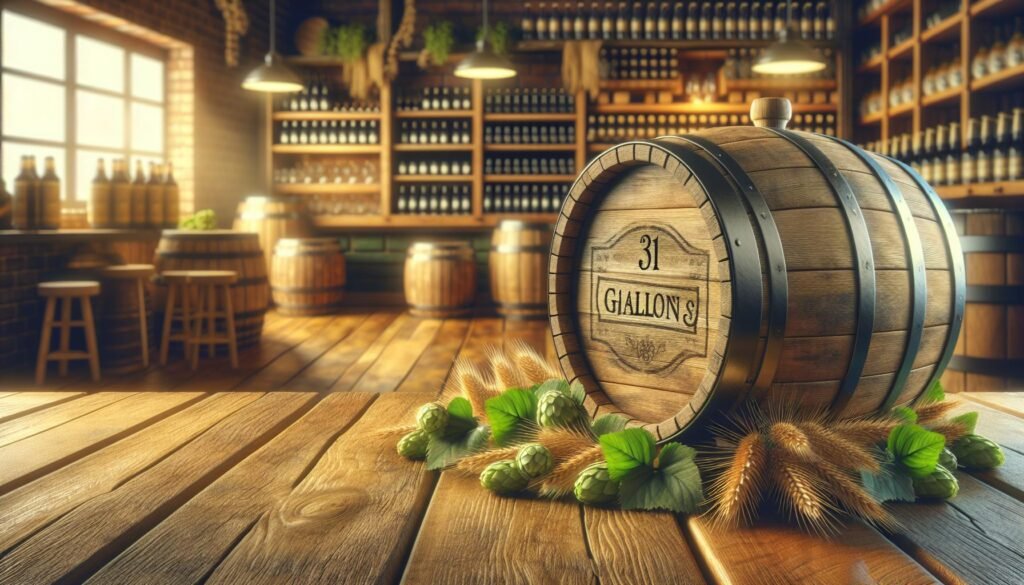When it comes to beer, there’s a lot more to it than just enjoying a cold one. Ever wondered how much beer a barrel actually holds? It’s a question that pops up more often than you’d think, especially for those curious about brewing, distribution, or just fun beer trivia.
Understanding the size of a beer barrel isn’t just about numbers; it connects to the history and traditions of brewing. Whether you’re planning a large event, diving into homebrewing, or simply curious about the industry, knowing how many gallons fit in a barrel can be surprisingly useful. Let’s break it down and uncover what makes a barrel of beer so special.
Understanding Beer Barrel Measurements
A beer barrel is a standard unit of measurement with historical and practical significance. It’s essential to grasp its origins and purpose to appreciate its role within the brewing industry.
History Of The Beer Barrel
The concept of the beer barrel dates back to medieval Europe. Brewers standardized barrel sizes to facilitate trade and taxation, with wooden barrels serving as both storage and transport vessels. In the United States, a beer barrel was defined as 31 gallons during the late 19th century under federal regulation. This standardization ensured consistency across brewing operations and distribution.
Why Barrels Are Used For Beer
Barrels historically served functional purposes like aging, storing, and transporting beer. Wooden barrels provided durability and allowed brewers to ferment and transport beer in one vessel. Today, the term “barrel” refers to a volume measurement rather than a physical container. Brewers use the standard size to simplify production scaling, inventory tracking, and sales reporting. For example, microbreweries might produce beer in half-barrels (15.5 gallons) or quarter-barrels (7.75 gallons) for keg distribution.
How Many Gallons In A Barrel Of Beer?

A barrel of beer holds a precise volume, with measurements varying by region. In the US, the definition of a beer barrel is standardized for consistent use in brewing and commerce.
Standard US Beer Barrel Measurement
A standard US beer barrel contains 31 gallons. This measure was defined in the late 19th century to regulate commercial brewing and distribution. Commonly used in breweries, it simplifies scaling production and managing inventory.
Smaller derivatives include the half-barrel at 15.5 gallons and the quarter-barrel at 7.75 gallons. For example, these smaller sizes are prevalent in keg distribution to bars and events.
Differences Between US And UK Beer Barrels
US and UK measurements for beer barrels differ significantly. In the UK, a beer barrel traditionally measures 36 imperial gallons, equivalent to roughly 43.2 US gallons.
This variation stems from historical differences in measurement systems. While the US defined its standard for commercial uniformity, the UK adopted imperial gallons for broader trade and legislative purposes. For instance, UK casks often follow this measurement, influencing traditional ale breweries.
Factors Influencing Barrel Sizes

The size of a beer barrel varies based on regional standards and brewery practices. These differences affect capacity measurements and usage in brewing and distribution.
Variations By Region
Regional standards play a significant role in barrel size definitions. In the US, a beer barrel holds 31 gallons, while in the UK, a beer barrel typically measures 36 imperial gallons (43.2 US gallons). European brewing regions historically used local measurement units, resulting in diverse barrel sizes. For instance, Germany’s “hogshead” barrel traditionally held 63 gallons. These regional differences stem from historical trade practices and measurement systems that shaped how beer was brewed and distributed.
Variations By Brewery
Individual breweries adopt barrel sizes based on operational requirements. Large commercial breweries often produce in standard 31-gallon barrels to align with US distribution norms. Craft and microbreweries frequently use smaller sizes, like half-barrels (15.5 gallons) or quarter-barrels (7.75 gallons), for greater flexibility in small-batch brewing and local distribution. Custom barrel sizes are also used by specialty breweries experimenting with aging techniques, such as using 59-gallon wine barrels for unique flavors. Brewery-specific standards reflect their production scale and branding preferences.
Fun Facts About Beer Barrels

Beer barrels have a rich history, with intriguing details woven into their design, use, and legacy. From historic milestones to impressive records, these containers symbolize both function and tradition in brewing.
Iconic Barrels In Beer History
The Burton Union system, developed in the 19th century, stands out as a significant innovation. Brewers in Burton-on-Trent, England, used wooden barrels connected with troughs, allowing controlled fermentation and consistent ale quality.
In the United States, Anheuser-Busch popularized large-scale barrel production during the early 20th century, promoting consistency and efficiency. These barrels supported their flagship beer, Budweiser, and paved the way for standardized brewing practices.
Craft breweries revived the use of oak barrels in the late 20th century, inspired by traditional aging methods. Goose Island’s Bourbon County Stout, aged in bourbon barrels, redefined flavor experimentation, creating a new trend in craft beer.
Record-Holding Barrels Around The World
The world’s largest beer barrel resides in Heidelberg, Germany, at the Heidelberg Castle. Built in 1751, this wooden tank holds 58,124 gallons, though it’s no longer used for beer storage.
In Jamaica, Red Stripe produced a record-breaking barrel holding 34,677 gallons in 1988. This massive vessel celebrated the brewery’s 60th anniversary and showcased their production capabilities.
A Czech brewery, Pilsner Urquell, achieved another record in 2018 for the longest beer barrel aging process. This unique batch spent ten years in traditional wooden barrels, highlighting the critical role of craftsmanship in brewing.
Conclusion
Understanding the size of a beer barrel offers more than just a practical advantage; it connects us to the rich history and evolving traditions of brewing. From the standardized 31-gallon US barrel to the creative use of custom barrels by craft breweries, these measurements reflect the diversity and innovation in the beer industry.
Whether you’re planning an event, diving into homebrewing, or simply exploring beer culture, knowing how barrels shape production and flavor can deepen your appreciation for this timeless craft. Cheers to the fascinating world of beer barrels!
Frequently Asked Questions
What is the standard size of a US beer barrel?
A standard US beer barrel holds 31 gallons. This measurement was established in the late 19th century to ensure consistency in commercial brewing and distribution in the United States.
How does the size of a UK beer barrel differ from a US beer barrel?
A UK beer barrel traditionally contains 36 imperial gallons, which is approximately 43.2 US gallons. This difference stems from varying historical measurement systems used for trade and industry.
Why are barrels important in brewing?
Barrels serve multiple purposes in brewing, including aging, storing, and transporting beer. They also provide a standard measurement for scaling production, tracking inventory, and reporting sales, especially in commercial and craft brewing.
What are half-barrels and quarter-barrels?
A half-barrel holds 15.5 gallons, while a quarter-barrel contains 7.75 gallons. These smaller sizes are often used by microbreweries and for keg distribution at events or parties.
Do breweries use custom barrel sizes?
Yes, some breweries use custom barrel sizes, like 59-gallon wine barrels, for aging beers and experimenting with unique flavors. This practice is common among specialty and craft breweries.
What is the historical significance of beer barrels?
Beer barrels date back to medieval Europe, where they were standardized for trade and taxation. They played a critical role in beer storage, fermentation, and transportation, with wooden barrels enabling controlled brewing.
What are some interesting facts about beer barrels?
Historic innovations include the Burton Union system for fermentation and Anheuser-Busch’s large-scale barrel production. Additionally, the largest beer barrel is in Heidelberg, Germany, holding 58,124 gallons.
Why do craft breweries prefer small barrel sizes?
Craft breweries often use small barrel sizes like half-barrels or wine barrels for flexibility in small-batch brewing and flavor experimentation. These sizes also align with their production scale and branding.
What is the largest beer barrel in the world?
The largest beer barrel in the world is located in Heidelberg, Germany, and it holds an impressive 58,124 gallons. This iconic structure is a symbol of beer history and tradition.
How long can beer be aged in a barrel?
Beer can be aged for extended periods depending on the desired flavor profile. For example, Pilsner Urquell aged beer in barrels for ten years, showcasing the craftsmanship of brewing.
